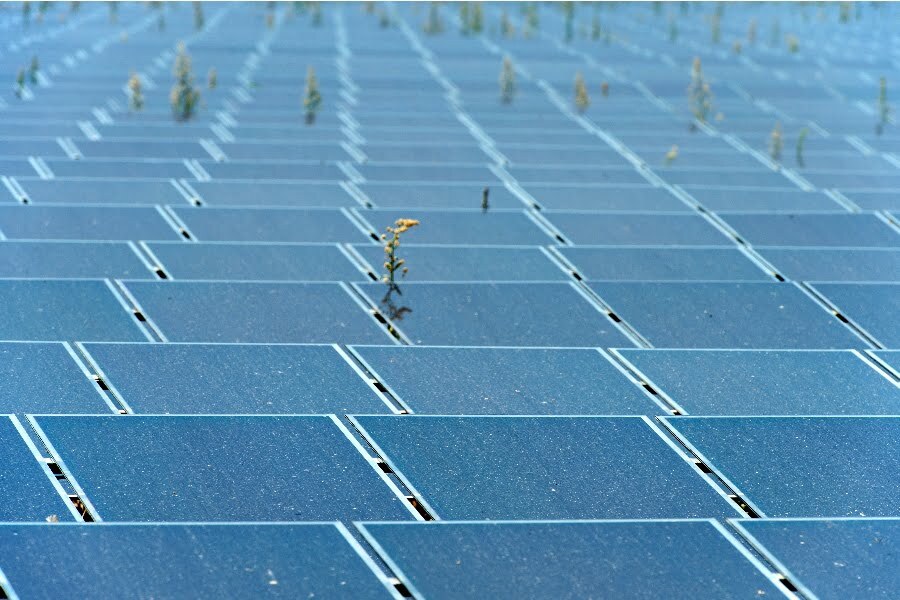Last updated on
Learn what renewable waste is and how it will impact our environment in the future. Read on!
The rise of renewable technology promises to help create a net zero and ultimately carbon zero world.
While this switch will be necessary to ensure a sustainable future (and likely any future at all for humanity), concerns are emerging that even renewable technology may pose an environmental hazard.
But what exactly is this potential environmental disaster, how big of a problem could it be and what can we do now to limit the environmental impact of renewable waste?
Let’s take a look.
What Is Renewable Waste?

Undoubtedly renewable waste in a sustainable future would not be as big a concern as the environmental damage caused by fossil fuels in our current world (that has us on track for a possible global climate catastrophe), however, renewable waste is no footnote of the world of tomorrow either. But what is renewable waste exactly?
As solar panels (and other renewable technology) ages and eventually needs replacing, it must be disposed of. While some of this will be recycled, that will not always be the case. In fact, estimates from the International Renewable Energy Agency or IRENA suggest that only about 1 in 10 solar panels are recycled.
Already, California is noticing many solar panels that have reached the end of their use (particularly those installed after incentives were introduced in 2006) are ending up in landfills. Clearly, having approximately 90% of solar panels ending up in dumps is not what we imagine when we think of the word sustainable.
What’s more, solar panels being thrown into landfills risks polluting groundwater with a range of toxic materials including lead, selenium and cadmium.
All in all, efforts to ensure that renewable technology is more often recycled or/and longer lasting will be key to preventing a fresh environmental disaster resulting from our push towards renewable energy.
How Big of a Concern Is Renewable Waste?
As touched on, a world where we are not creating a runaway greenhouse effect but have issues related to renewable waste is better (or not as terrible depending on your perspective) than our current one.
However, even now, with the majority of energy production involving the burning of fossil fuels, we have a situation where solar panels resulted in approximately a quarter of a million metric tonnes of waste just in 2018 according to IRENA. Naturally, as renewables become more prominent and unless suitable action is taken, the level of waste created by renewables will increase substantially more.
Future projections are indeed concerning. For example, the European Environment Agency suggests that renewable waste will grow by as much as thirty times before 2032.
However, the agency also highlights this as an opportunity to mass recycle scarce raw materials (e.g., metals and other valuable resources), thus reintroducing them into production systems. We’ll discuss more on potential solutions a bit later.
California as an Emerging Case Study
In 2006, the California Public Utilities Commission introduced the California Solar Initiative which granted more than $3 billion in subsidies for the installation of rooftop solar panel arrays.
After years of small government rebates failing to act as a sufficient incentive for properties to install solar panels, the California Solar Initiative came along and made a significant difference.
By 2006, there were less than 500 independent solar arrays in the state, however, the California Solar Initiative has played its role in seeing that number skyrocket to over 30,000 in recent years.
Unfortunately, despite these efforts and good intentions, there is an increasing number of end-of-life solar panels ending up in Californian landfills.
Solar panels usually last between 25 and 30 years. Of course, it hasn’t even been twenty years since 2006 (as much as time is flying, thankfully it hasn’t been that cruel, however, the key word in the prior sentence is ‘usually’. Many panels that were introduced as a result of the initiative are therefore now appearing in landfills.
Last July, chief executive of Recycle PV solar and solar industry expert Sam Vanderhoof raised his concerns over this emerging issue in an interview with the LA Times. Mr. Vanderhoof brought up IRENA’s figure of only around 10% of panels being recycled and expressed that while “the industry is supposed to be green” he believes “in reality, it’s all about money.”
Whether or not Mr. Vanderhoof is correct (and if so to what extent) with the latter point, there has clearly been a lack of planning in California to deal with the problem of renewable waste and with the number of independent solar systems now numbering in the thousands, you can see how this issue will likely grow exponentially in the years to come.
California acts as a warning case for the rest of the world with the number of renewable technology setups increasing globally. Plans are needed to ensure that renewable waste does not create a new environmental disaster.
Potential Solutions
If renewable waste is properly recycled, a sustainable circular economy is achievable to help enhance future sustainability and limit the risk of renewable technology creating a fresh environmental disaster.
A fully functioning circular economy would involve the repairing and upgrading of existing renewable systems to keep them active for as long as is feasible before recycling end-of-life infrastructure to create a truly sustainable tomorrow.
But how exactly could this be achieved? As renewable energy sectors continue to grow fast, there will be a need for governments and societies to adapt quickly as the years progress and ensure that mass recycling of renewable technology (and other technologies, infrastructure and items for that matter) is made into a reality.
Aside from, say, governments setting aside adequate time and funding to ensure that a higher and higher percentage of end-of-life renewable tech infrastructure is actually recycled, waste-to-energy plants may be another major solution.
Waste-to-energy plants involve the incineration of waste to produce energy. While these plants would not be entirely clean from an air pollution perspective, they would be better for the environment than current fossil fuel generation while also reducing the amount of renewable technology that ends up in landfills.
Clearly, this second solution is not ideal. However, it may be a matter of weighing things up and determining whether the use of waste-to-energy plants (particularly where recycling is likely not an option) is a better choice than sending such waste to the dump.
With that said, given our push toward a cleaner future, especially in relation to the atmosphere, you can see how waste-to-energy plants may not be very popular in the future.
Therefore, recycling as much as possible while maintaining and repairing renewable technology effectively to maximize their lifespan may be the best way forward. As discussed, efforts should also be undertaken to increase the longevity of renewable technology from the beginning with more durable designs.
Will Renewable Waste Create the Next Big Environmental Disaster?
At this point it’s hard to say whether or not renewable waste will prove a major environmental disaster. However, as things stand and based on current projections, it looks like renewable waste will become an increasingly pressing issue in the years to come.
It’s easy to imagine that as renewable technologies become more commonplace, awareness of renewable waste will increase. One risk is that with the focus being heavily on climate change with relation to environmental degradation (which of course makes sense) that concern for renewable waste may not reach the level required to prevent it becoming a disaster.
Ultimately, no one knows the future but there are worrying signs that renewable waste will cause a wide array of issues in the decades to come. Therefore, steps should be taken now to prevent a renewable waste disaster before it happens. This would also allow us to benefit from the rise of the mass recycling of renewable tech infrastructure once it is no longer usable.
Recap:



